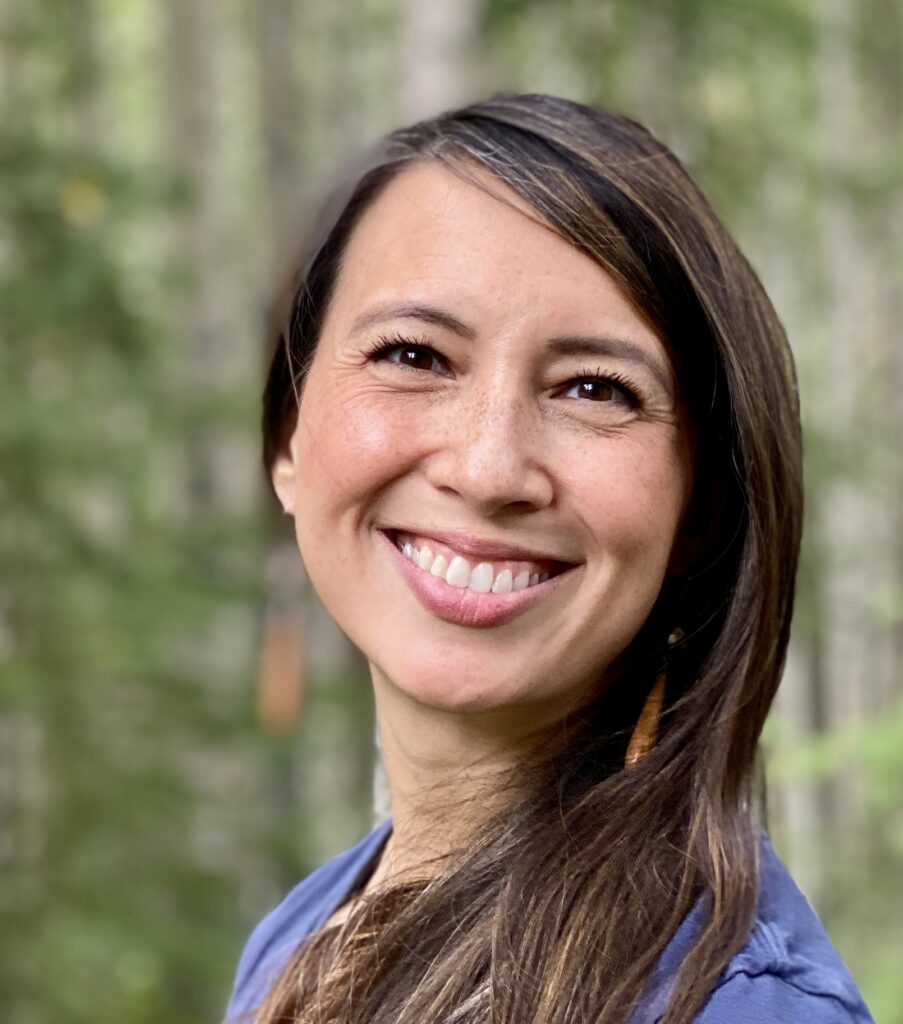Stonecoast Review
The Literary Journal of the Stonecoast MFA
Staff Spotlight
Annie Wenstrup

Annie Wenstrup is a Dena’ina poet. Her work recently appeared in About Place, Diode, Ecotone, The New England Review, Poetry, and Ran Off with the Star Bassoon and is forthcoming in Poets & Writers, and The Kenyon Review. Her poetry collection, The Museum of Unnatural Histories, is forthcoming from Wesleyan University Press (March 2025). You can read more about Annie and her work at www.akwenstrup.com
What do you write?
Poems and essays. Lately I’ve been writing essays about Alaska. I’m originally from Anchorage but I’ve spent the last 17 years in Fairbanks. I have a lot of questions about what it means to live here. What would a reciprocal relationship with the more-than-human-world look like here? What are my responsibilities to the communities I belong to?
My poetry uses form—nonce and received—to explore how experiences of embodiment. The questions I bring to poetry are more nebulous than what I bring to prose. What shape would this experience make on the page? What kind of consonance or patterning echoes this emotional tenor?
Is there an author or artist who has most profoundly influenced your work?
My thesis began as a collection of ekphrastic poems. I have a hard time sitting down to an empty page and believing that I can write a first draft of a poem. It’s a horribly uncomfortable experience. But engaging with art removes that barrier, because the ekphrastic poem continues a conversation that another artist has already begun. So, it feels a little less like approaching a blank page. Recently I’ve been carrying images by the artists Sarah Whalen Lunn, Florence Napaaq Malewotkuk, and Susie Bevins close to my heart while I work.
Why did you choose Stonecoast for your MFA?
I was initially attracted to Stonecoast because of its excellent poetry faculty and the WISE program. But what decided it for me was a conversation I had with Justin about the incoming poetry cohort. He was so excited about the incoming class. He spoke about his hopes for how each poet’s strengths would complement the cohort as whole. I knew I wanted to be in an environment that valued community over competition.
What is your favorite Stonecoast memory?
During the summer 2021 residency, Cate Marvin taught “Trauma vs. Transgression” which examined the relationship between confessional poetry and white supremacy culture. I had one true “aha” moment in that class that clarified what I wanted to explore in my manuscript. The course also provided me with insight into how white supremacy culture shapes my life.
What do you hope to accomplish in the future?
I’m excited about my role as Alumni and Donor Relations Coordinator at Indigenous Nations Poets. We’re a national organization that provides mentorship to emerging Native writers. I was an In-Na-Po Fellow during my final semester at Stonecoast and the Fellowship helped with the post-graduation transition. My goal is to ensure that other emerging Indigenous Poets have access to literary spaces that support tribal, cultural, and linguistic sovereignty.
If you could have written one book, story, or poem that already exists, which would you choose?
The Monster at the End of This Book by Jon Stone.
The following poem first appeared in Poetry Northwest, Summer & Fall 2021.
“My Heart is a Rube Goldberg Machine”
by Annie Wenstrup
My Heart is a Rube Goldberg Machine
It looks like an alcove, a nave, a maze of pneumatic tubes.
Drive through banking. It exchanges blue notes for red.
It’s famous. I’ve seen it on screen,
reproduced in grainy black and white.
It’s how I’ve met everyone important.
We—the sonographer, my husband and I—
sounded out my son, later my daughter
this way. We bounced waves off
their tadpole bodies and rendered them
into pixels.
When I see my heart, its ascending
and descending aortas, left and right
pulmonary veins and arteries, I smell
disinfectant. The ether assaults my nose
and I remember my first roommate.
I think of how she whispered that she
was desperate to feel anything, and she’d
snort anything. Hoping for pleasure.
Settling for pain.
When we met, her heart was a withered fist pounding odd tempos at odd hours.
She said it was like having a cranky neighbor that pounded a broom whenever you vacuumed. We never vacuumed so I never found out if that was true.
I think vacuums work
by inhaling air through
a pneumatic tube,
exchanging air
for more air.
And when I think about air
and how it doesn’t look like anything
at all, I remember how odd it was
to have so much of it—
enough to yell, later enough to cry, when she had none at all.
